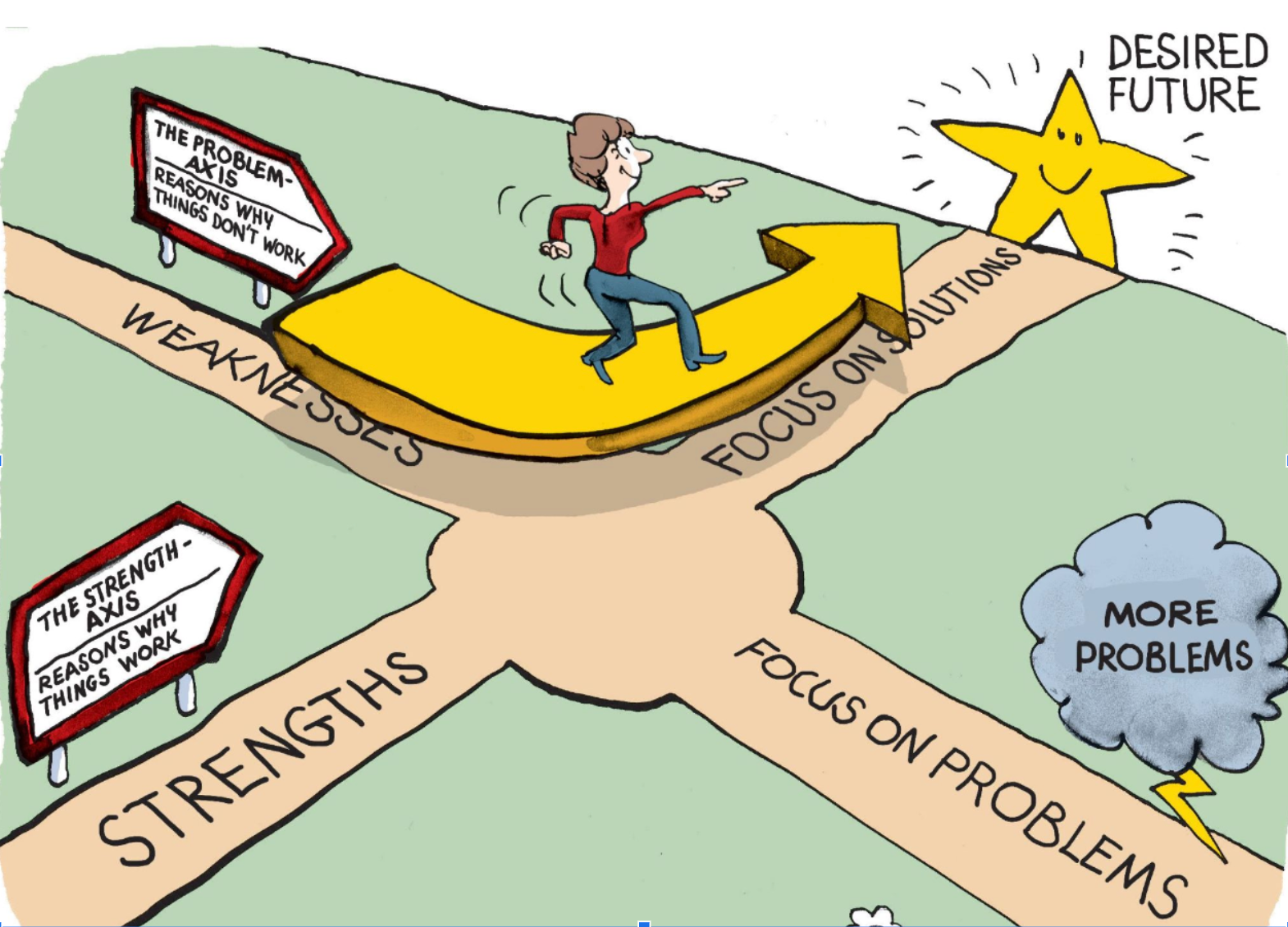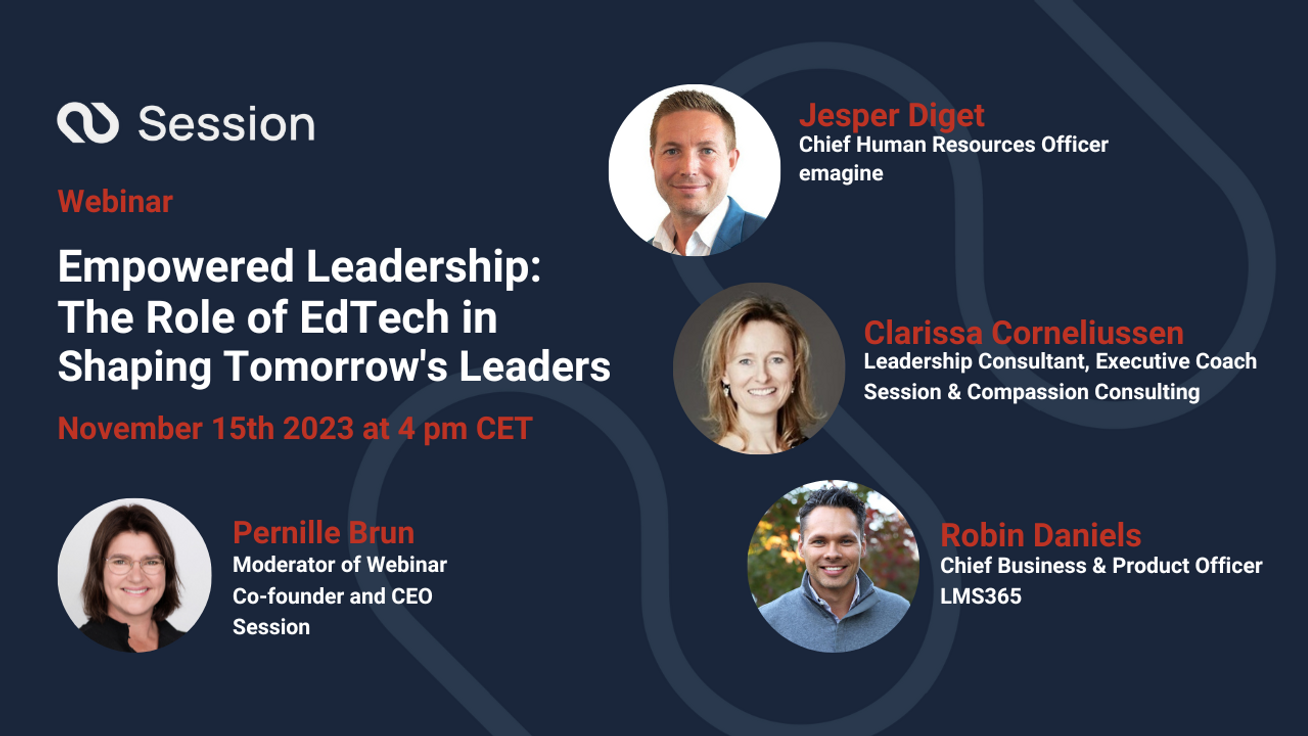In today’s world, we hear a lot about problems, and less about solutions. The tendency to focus our attention on problems permeates our work, too. How often have you found yourself in a team meeting listening to problems but not leaving with a clear solution? Because the human brain is wired towards negativity as a coping mechanism, we often focus on problems.
However, with the right training, we can overcome this. The solutions-focused approach counteracts our human tendency to jump to the negatives.
In this article we are learning more about the solutions-focused approach within conversations at work, in coaching and management. Paul Z Jackson is an independent training consultant who offers solutions-focused training to his wide range of clients. In this article, Paul shares some practical tips and insights into the solution-focused approach. We hope you will enjoy reading this piece!
First, let us take a look at the definition of the solutions-focused approach and explore its advantages.
What Is the Solutions Focused Approach?
The solutions-focused approach emphasizes looking for solutions, strengths and resources in people, teams and systems. This approach is based on the belief that people have within them the capacity to find solutions to their problems, if only asked the right questions! The approach is outcome-oriented and focuses on the future, while dipping into the past as a source of resourcefulness.
It is:
- A set of tools and principles for clarifying what is wanted, discovering resources and deciding what to do
- A positive, direct route to change
- Finding what works and doing more of it!
The approach is, as briefly mentioned above, all about the questions we ask in the conversations we hold. Here are some example of questions, which you can ask when having solutions-oriented conversations:
- What is working well at the moment?
- What would we like to see change - what does our future perfect look like?
- What resources - in ourselves and in the system around us - can we draw on to solve our problem(s) / get closer to the future perfect?
- What’s worked well in the past in similar situations - what happened? What does this teach us about what would be beneficial to do here and now?
- What do we know which we can draw upon in our current situation to best move forward?
- What is one first little step we can take to move closer to our future perfect/dream?

The Advantages of Solutions-Focused Conversations
‘’The trouble with traditional approaches to people's problems is that they assume a straightforward relationship between cause and effect, between a problem and its solution. A solutions-focused approach sidesteps the search for the causes of a problem and heads straight for the solution, showing you how to envisage your preferred future and quickly takes steps forward.’’
Paul Z Jackson, The Solutions Focus: Making Coaching and Change SIMPLE.
Let’s explore some solutions-focused conversations advantages below:
- It encourages us to take responsibility for our own progress, promoting a growth mindset and empowering us to make positive changes in our lives.
- It provides a supportive and encouraging environment for personal and professional development.
- It is outcome-oriented and focuses on the future, dipping into the past as a well of resourcefulness.
- It helps us identify our own solutions and develop a clear path towards achieving our goals, while also building confidence and resilience.
Now that we have some more context about the solutions-focused approach, let’s dive into how you can get started with the approach, should you wish to try it out.
How to get started with the Solutions Focused Approach in Conversations
Because the solutions-focused approach is conversation-based, there's no expensive machinery or systems that you need to get started. You can learn it by attending a webinar, doing a training course, or reading about it, and people can ‘’get it’’ quite quickly. We find that people are either ready for it and they see the sense immediately, or they're reluctant and take a while to warm up to the idea, or they may never see its value. We encourage you to try it out and judge for yourself!
We can make progress with our conversations faster by asking people what they want, focusing on their resources, (which is the strength-based element) and helping them decide what to do next. It’s important to remember that the solutions-based approach is an invitation. It’s an offer or an invitation rather than saying ‘’this is the only way to do things.’’
There are different ways of getting started. If you want to tell others that this is an approach you are trying out, and they are asking you why, you might want to share some stories of how effective solutions-focused questions are. Or point to some of the research that shows that the solutions-focused approach works well within ranges of contexts and that it's beneficial for the one who asks the questions as well as the recipient.
Next, we can say it's really quite simple and easy to learn and apply and you can start trying it straight away. There's only a couple of things we need to achieve to be solution focused. First, find out what you or the other want. If it's a team, you need to find out what you all want or what you want between you. You also need to find out about strengths, resources, experiences, and skills that might contribute to deciding what to do next. The final thing is about knowing what progress might look like so that you can take a step towards it or recognize it when it happens.
Sometimes it does start with individuals who are going into a culture that isn't oriented in a solutions-focused way. Sometimes it's a team and sometimes it is a whole organization that's interested in a solution focused approach and whichever it is, they're likely to be doing it in a problem-saturated world. Therefore, we need to take a closer look at our negativity bias, and why and how to overcome it.
Applying the Solutions Focused Approach in Team Work
There's something about humans that are attracted to problems, the analysis of them and being aware of them, and there's an element of sense to that. The problem of saturation is enhanced by the media; there's a preponderance of bad news because it grabs our attention. But none of those things are necessarily very useful if what we want to do is create progress or make useful change.
Therefore, solution focus is applicable when you want something to be different and you're willing to do something about it - even if you don't yet know what that is. It’s interesting to introduce it in team and organizational settings because you can create a project that's more powerful than one individual. If you get a group of people that want to do that, they can make tremendous progress. So they can either start from a setting where they know something is wrong and they want it to be better, or it can be a fresh project of creating a Future Perfect, as we call it, a desired scenario of how things would be if they were going well.
There’s all sorts of interesting and exciting ways to achieve this. Visioning, storyboarding, and playing out future scenarios, for example. Then the resource search: assessing what we've got that's going to help us get there, or that we can easily find from people adjacent to us, or that we can discover further afield. All in all, it’s a pragmatic, collaborative approach that works extremely well when there's more than one person participating with a conscious awareness that it's a solution-focused process.
In my consultancy, we are working with an organization now in the UK, and we’ve started implementing some changes and doing training within their HR department. It's a great place to begin with HR, because HR have their hands on all sorts of levers within the organization and can be instrumental in introducing more of the solutions focused methodology. They manage the performance review processes, which can be easily tweaked to include solutions-focused questions. HR and management can also form a group of champions who talk to each other about different solution-focused applications within their organization and then offer it either themselves or with external help, wherever it might be usefully applied, and build on what they're already doing.
How to Overcome Potential Skepticism in the Organization towards the Solutions Focused Approach
People are by default naturally skeptical and they've often got a long history of getting very deeply involved in problems, so they may not be ready to let go and make the switch towards a more solutions oriented approach.
Remember - you cannot ‘Solution Force’.
Instead, the solutions focused approach is an offer and a possibility for people to try, test and see if it works for them. Fortunately, it has pleasant elements that people very quickly find quite attractive. And when you've developed a vision that's appealing, it creates motivation, and participants show a willingness to explore how to get there. When you're talking about people's strengths and good experiences and good qualities, they enjoy that. And if you're inviting them only to take small steps rather than something that's really tough or difficult to do, that also has an element of simplicity and immediacy and can build momentum.
Initially, not talking about problems may seem a bit odd to some. But people generally find that refreshing and come to realize that the solutions-focused approach doesn’t require any kind of faith; it's based on giving it a go and seeing if it works for you. We hope that you will give it a go, try it out, and share your experiences with us through Session’s LinkedIn page and beyond!












